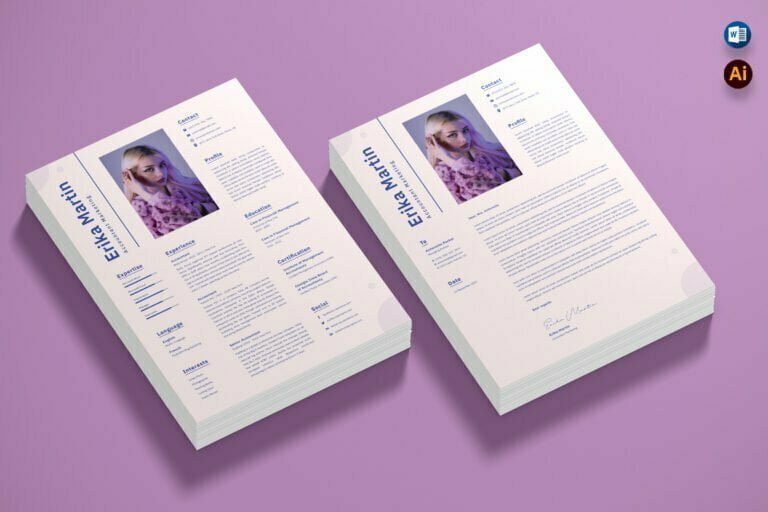Learn the secrets to getting your resume past applicant tracking systems and into the hands of recruiters
Introduction
In today’s digital job market, applicant tracking systems (ATS) are widely used by companies to screen resumes and identify potential candidates. These systems use algorithms to search for specific keywords, qualifications, and skills, making it essential for job seekers to optimize their resumes to increase their chances of being noticed. In this blog post, we’ll explain in detail how to optimize your resume for ATS, using examples to illustrate our points.
Use the Right File Format
ATS often struggles to read certain file formats, like PDFs or images. To ensure your resume is easily readable by these systems, save it as a Microsoft Word document (.doc or .docx) or a plain-text file (.txt). Avoid using headers, footers, and tables, as they can cause formatting issues for some ATS.
Example: Instead of saving your resume as “JohnDoe_Resume.pdf,” save it as “JohnDoe_Resume.docx.”
Choose an ATS-Friendly Resume Template
A simple, clean resume template is more likely to be easily scanned by ATS. Avoid using templates with graphics, images, or elaborate designs, as these can cause problems for the system. Stick to a clear and straightforward layout, using standard fonts like Arial, Calibri, or Times New Roman.
Example: Use a basic resume template with clearly defined sections for your contact information, objective/summary, work experience, education, and skills.
Incorporate Relevant Keywords
To optimize your resume for ATS, include relevant keywords that match the job description. These keywords are typically related to the specific skills, qualifications, and experiences required for the position. Make sure you use the exact wording from the job description to improve your chances of being recognized by the ATS.
Example: If the job description requires “project management experience,” make sure to include the phrase “project management” in your resume.
Use Standard Section Headings
ATS is designed to recognize and categorize information based on standard section headings. To ensure your resume is easily parsed, use common headings such as “Work Experience,” “Education,” “Skills,” and “Certifications.”
Example: Instead of using a unique heading like “Career Chronicles,” use the standard “Work Experience” heading for your job history.
Optimize Your Skills Section
The skills section is an opportunity to showcase your most relevant skills for the job you’re applying for. Be specific and use exact keywords from the job description, as this will help your resume rank higher in the ATS search results.
Example: If the job description requires proficiency in Microsoft Excel, list “Microsoft Excel” as a skill instead of using a vague term like “spreadsheet software.”
List Your Work Experience Chronologically
ATS typically expects to see work experience listed in reverse chronological order, starting with your most recent position. Using this format makes it easier for the system to understand your employment history.
Example: List your most recent job first, followed by the next most recent, and so on, making sure to include your job title, company name, and dates of employment.
Include Relevant Acronyms and Abbreviations
Make sure to include both the full term and its abbreviation or acronym to ensure your resume is recognized by the ATS. This will increase your chances of being identified as a potential candidate.
Example: List “Search Engine Optimization (SEO)” instead of just “SEO” or “Search Engine Optimization.”
Avoid Unnecessary Formatting and Images
ATS can struggle with interpreting images, logos, or unnecessary formatting. Stick to a clean, simple layout with minimal formatting to ensure your resume is easily scanned.
Example: Instead of using images or logos for your section headings, use simple, bold text.
Proofread and Check for Errors
Errors and inconsistencies in your resume can impact its readability by ATS. Make sure your resume is free of spelling, grammar, and formatting mistakes before submitting it.
Example: Ensure that your dates of employment are consistent throughout your resume, using either “January 2021” or “Jan 2021,” but not both.
Test Your Resume with an ATS Scanner
To ensure your resume is ATS-friendly, consider using an ATS scanner or online tool to evaluate its compatibility. These tools can help identify potential issues and suggest improvements.
Example: Use a free ATS scanner like Jobscan to evaluate your resume and receive feedback on its compatibility with applicant tracking systems.
Conclusion
Optimizing your resume for applicant tracking systems is essential to increase your chances of being noticed in today’s digital job market. By following these detailed tips and using examples as a guide, you can create a resume that will not only get past the ATS but also catch the attention of recruiters. Invest time in crafting an ATS-friendly resume, and you’ll be one step closer to landing the job of your dreams.

